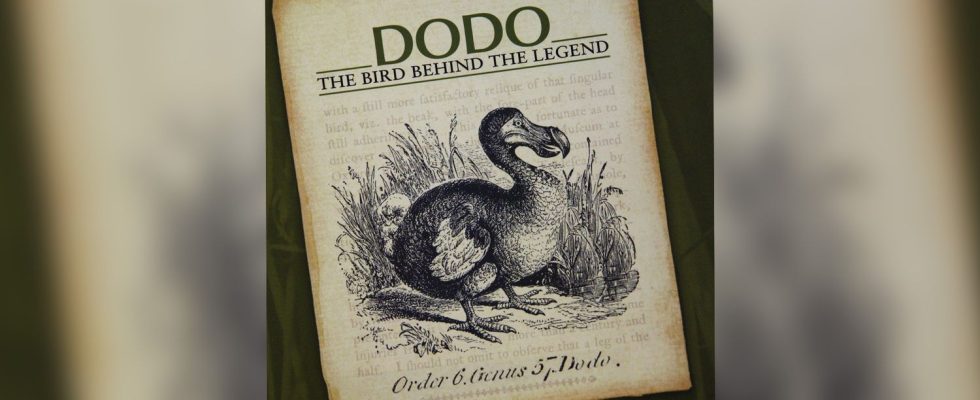This bird lived on Mauritius until the end of the 17th century. It is one of the symbols of the extinction of animal species due to human activities.

Published
Reading time: 3 min

Since the weekend of Saturday March 23 and Sunday March 24, two loving dodos, one looking curious and enthusiastic, the other grumpy and suspicious, have been welcoming visitors to the Grand Gallery of Evolution of the National Museum of ‘Natural History of Paris, at the entrance to the room of extinct species. What could be more logical since dodos are undoubtedly the representatives of one of the most famous extinct species alongside the dinosaurs. With one difference, their meteoric extinction has nothing to do with an asteroid, and everything to do with human activities.
In fact, less than a century passed between the arrival of the Dutch on Mauritius Island in 1598 and the disappearance of the dodos in 1662. The consequence not so much of hunting as of the landing, with men, of the rodents which feasted on the eggs of the dodos.
Little knowledge about this species
It is this story that the Museum wanted to tell by reconstructing two specimens of dodos. But how can we bring back to life an animal about which we know almost nothing? Of which only a few bones, rare paintings and vague descriptions of shy, clumsy and flightless birds remain? The work was entrusted to a sculptor, but all the casts of the head, body and legs have been scientifically validated. The Museum still gives pride of place to fiction, by choosing to feature a couple, since, as Lewis Carroll and his zany dodo wrote, “Even if life has no meaning, nothing stops us from inventing one.”
The Museum’s sleeps were designed to be as faithful to reality as possible. Visitors will discover that these birds were not so clumsy after all. Perhaps they were even as intelligent as their pigeon cousins, capable of carrying messages. No one will ever be able to answer this question. If an American company claims to want to bring dodos back to life by injecting that of a species of pigeon into their genome, it is likely that this wacky project will remain at the stage of fiction. So much the better, because even if the dodos would have been worth giving them a chance, we can’t really resurrect an extinct species. And then there are today many other representatives of wild fauna to be preserved, of which only humans can prevent them from joining the dodos of Mauritius, in the already too large room of extinct species of the Museum. So we wake up. Finished sleeping!
